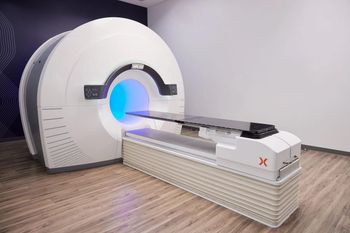
Screening mammography travels back roads of Europe
GE Healthcare is refining its mobile approach to screening mammography in outreach efforts aimed at serving Europe’s diverse populations, adapting digital technology to meet the rural challenges found in both Western and Eastern European nations.
GE Healthcare is refining its mobile approach to screening mammography in outreach efforts aimed at serving Europe's diverse populations, adapting digital technology to meet the rural challenges found in both Western and Eastern European nations.
Maintaining image quality, despite vibrations from the road and variations in temperature due to weather, is always the central issue, according to Marie Macary, European marketing manager for GE mammography.
"We have to provide clinical confidence," said Macary, speaking this week to DI SCAN at the European Congress of Radiology in Vienna. "Even with vibration and temperature changes, the quality must be the same."
GE has emphasized the portability of its digital mammography systems, first the Senographe 2000, released seven years ago, then the 2000D three years later, and most recently the Essential. The first two have been the stalwarts of GE mobile efforts in Europe, which began soon after the 2000 model was commercialized. The company is adding to its fleet of vans with ones housing its most advanced model, the Essential.
GE hardens these systems against factors that might affect performance. Getting this modality out of the clinic and to rural communities is considered crucial to public health.
"Screening programs are effective only if they can do 70% of the patients," Macary said. "With mobile, you can go anywhere, even remote areas, and provide quick service."
Macary estimates that each of the 30 or so mobile vans carrying GE digital Senographe systems around Europe can do as many as 100 patients per day. The value of having digital systems on the road goes beyond capacity. Providers create a buzz ahead of the vans' arrivals, getting the word out that state-of-the-art mammography equipment is en route to their communities.
"It becomes an event," she said. "When a mobile unit is coming to a village, that is something to talk to your neighbor about."
The leading edge of this technology ultimately will be its ability to transmit data by telemammography, facilitating same-day readings and diagnosis. This is still beyond present capabilities, however. Instead, data are stored onboard the vans and taken to locations where images can be read. In this way, GE is working out the fundamental details behind screening programs - reaching out to remote communities, getting patient data, and ensuring that the exams are read correctly.
"For the time being, telemammography is not a reality, but we are working on it," Macary said.
Newsletter
Stay at the forefront of radiology with the Diagnostic Imaging newsletter, delivering the latest news, clinical insights, and imaging advancements for today’s radiologists.




























